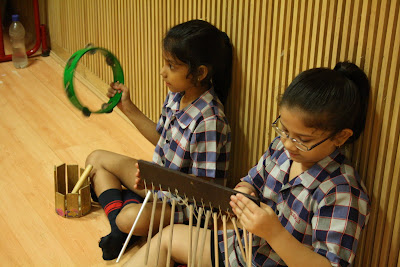'Make kids creative by changing the way they are taught'
Thu, Sep 30 05:52 AM
"If we want our children to be creative, there is an immediate need to change the way we are teaching them," said Kerala-based educationist K B Jinan. He was in the city recently to talk about why the present education system needs a paradigm shift to retain the creativity of children.
Jinan has been documenting the behaviour of children in rural as well as urban settings in places like Nagaland, Bihar, Orissa and now Kerala. He has been studying the differences in the behavourial patterns in these different settings and has reached the conclusion that teaching children through strictly structured curriculum makes a child lose his natural creative ability.
"I have interacted with children in the slums of Hyderabad and have found the astonishing fact that most of the children there can fluently speak at least four languages such as Kannada, Tamil, Telegu and Hindi. However, they do not have any teacher to teach languages. It is simply their ability to grasp what they are watching and hearing. It is such a cognitive process and there is so much of natural learning taking place here," said Jinan.
He said learning is a more biological realm whereas teaching is psychological, thus both the processes belong to two completely different paradigms. "We impose set rules on children, thereby disturbing their natural learning process. What I feel is children are more innocent, open and humble who do not know anything about the vices of that it is we who should learn from them," he said.
Jinan is an engineer and did a course from National Institute of Design (NID). He says his outlook towards education changed when he was at the NID. "NID is a place where students are not taught. They are just left to be and that is where they come up with the most amazing designs. You take responsibility for what you learn. You think, you read, with no external pressure. We need to have similar teaching processes for children. Our system needs flexibility."
Jinan also said since after parents, a child spends maximum time with teachers. "Children are being taught skills of reasoning and memory in schools, which are useful for analysing what is known. But what about the unknown? A child's creativity is getting killed with the old methods of teaching. The brain is getting used to static memorised information. What we need to do is to let them learn naturally. That is the only way how their creativity can be retained."










































